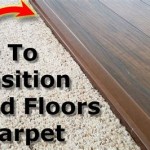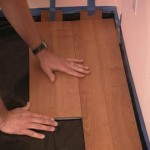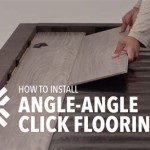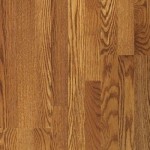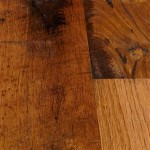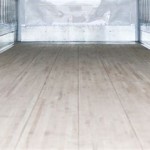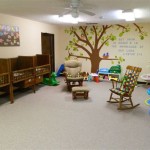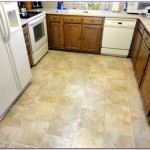Luxury Vinyl Plank Flooring: Achieving a Concrete Look
Luxury Vinyl Plank (LVP) flooring offers a versatile and aesthetically pleasing alternative to traditional flooring materials like hardwood, tile, or natural stone. One particularly popular style mimics the appearance of concrete, providing a modern, industrial chic look while offering the practical benefits associated with vinyl.
Concrete flooring has become increasingly desirable in contemporary design due to its minimalist aesthetic and perceived durability. However, real concrete floors can be expensive to install and maintain. They are prone to cracking, staining, and can feel cold and hard underfoot. LVP flooring with a concrete look successfully replicates the visual appeal of concrete while eliminating many of its drawbacks. This article explores the advantages, installation considerations, design options, and maintenance aspects of LVP flooring that mimics concrete.
Durability and Practicality of Concrete Look LVP
LVP flooring is composed of multiple layers, offering superior durability compared to traditional vinyl or even some natural materials. The wear layer, the topmost protective layer, is crucial for resisting scratches, scuffs, and stains. A thicker wear layer indicates greater durability and suitability for high-traffic areas. Concrete look LVP is particularly advantageous in spaces where actual concrete might be impractical, such as kitchens, bathrooms, basements, or commercial settings. The water-resistant properties of LVP make it ideal for areas prone to moisture.
Furthermore, LVP offers a more comfortable underfoot experience than concrete. The layered construction provides a slight cushioning effect, mitigating the cold, hard feel associated with concrete. This cushioning also contributes to sound dampening, making LVP a more acoustically friendly option, especially in multi-story dwellings or commercial spaces. The ease of cleaning is another significant advantage. Unlike concrete, which can be porous and require specific cleaning products, LVP can be easily maintained with regular sweeping and occasional mopping with a mild detergent.
The resilience of LVP extends to its resistance to fading from sunlight exposure. High-quality LVP products are treated with UV protectants, preserving the integrity of the concrete visual for extended periods. This is particularly important for spaces with large windows or significant sun exposure.
Installation Considerations for Concrete Look LVP
The installation process for LVP is generally simpler and less labor-intensive than installing real concrete. There are several installation methods available, including click-lock, glue-down, and loose-lay. Click-lock LVP, also known as floating floor, is the most common and often preferred method for DIYers and professionals alike. The planks interlock with each other, creating a seamless surface that does not require adhesive.
Glue-down LVP provides a more permanent installation. It's often used in commercial settings or areas with heavy traffic. This method requires a clean, level subfloor and the application of a suitable adhesive. While it offers greater stability, glue-down LVP can be more challenging to remove or replace.
Loose-lay LVP relies on the weight and friction of the planks to hold them in place. This method is suitable for smaller areas or temporary installations. However, it may not be as durable or stable as click-lock or glue-down methods. Regardless of the installation method, proper subfloor preparation is crucial. The subfloor must be clean, level, and dry to ensure a successful and long-lasting installation. Any imperfections in the subfloor can telegraph through the LVP, resulting in unevenness or premature wear.
Before installing LVP, it is recommended to allow the planks to acclimate to the room temperature for at least 48 hours. This allows the material to expand or contract, preventing issues such as buckling or gapping after installation. Proper cutting tools are essential for achieving clean and precise cuts. A utility knife or a specialized LVP cutter can be used to trim planks to fit around walls, doorways, and other obstacles. Expansion gaps should be left around the perimeter of the room to accommodate any future expansion or contraction.
Design Options and Aesthetics of Concrete Look LVP
Concrete look LVP is available in a wide range of colors, textures, and sizes, offering flexibility in design. From light gray to dark charcoal, subtle variations in color can mimic the natural imperfections and tonal shifts found in real concrete. The texture of the LVP can also be varied to replicate the smooth, polished surface or the rough, textured surface of concrete.
The size of the planks can significantly impact the overall look and feel of the space. Larger planks can create a more spacious and seamless appearance, while smaller planks can add a more detailed and textured look. The grout lines, or lack thereof, between the planks also contribute to the aesthetics. Some LVP products have beveled edges, which create a slight indentation between the planks, mimicking the look of grout. Other products have square edges, which create a more seamless and modern look.
Concrete look LVP can be used in a variety of design styles, from minimalist and industrial to contemporary and transitional. It pairs well with other natural materials, such as wood, metal, and glass. In a minimalist setting, concrete look LVP can be combined with clean lines and simple furniture to create a serene and uncluttered space. In an industrial setting, it can be paired with exposed brick, metal accents, and rustic furniture to create a raw and edgy look. In a contemporary setting, it can be combined with bold colors, geometric patterns, and statement lighting to create a vibrant and modern space. The versatility of concrete look LVP allows it to be integrated into almost any design scheme.
Beyond color and texture, the pattern of the LVP can also contribute to the overall aesthetic. Some LVP products feature a random pattern, mimicking the natural variations found in real concrete. Other products feature a more uniform pattern, creating a more consistent and polished look. The choice of pattern depends on the desired aesthetic and the overall design of the space.
The ability to coordinate concrete look LVP with other design elements, such as wall colors, furniture, and accessories, is a significant advantage. Lighter shades of concrete look LVP can brighten a room and create a sense of spaciousness, while darker shades can add depth and warmth. The neutral color palette of concrete look LVP allows it to be paired with a wide range of colors, from bright and bold to muted and subtle. The use of area rugs can add warmth and texture to the space, while accent lighting can highlight the unique features of the flooring.
Concrete look LVP is also available in various plank widths and lengths, further enhancing design flexibility. Wider planks can create a more luxurious and expansive feel, while longer planks can minimize the number of seams and create a more seamless appearance. The combination of different plank widths and lengths can add visual interest and create a more dynamic look.
The realistic appearance of concrete look LVP is achieved through advanced printing technology and embossing. High-resolution images of real concrete are used to create the visual layer of the LVP, while embossing adds texture and depth to the surface. The combination of these techniques creates a flooring product that convincingly replicates the look and feel of concrete.
Consideration should also be given to the lighting in the space when selecting concrete look LVP. Natural light can enhance the texture and variation of the flooring, while artificial light can alter the color and appearance. It is recommended to view samples of the LVP in different lighting conditions before making a final decision.
In addition to residential applications, concrete look LVP is also suitable for commercial spaces. Its durability and ease of maintenance make it an ideal choice for offices, retail stores, and restaurants. The modern and industrial aesthetic of concrete look LVP can create a stylish and professional environment.
The use of concrete look LVP in conjunction with underfloor heating systems is also possible. The thermal conductivity of LVP allows it to efficiently transfer heat, providing a comfortable and energy-efficient heating solution. However, it is important to ensure that the LVP product is compatible with underfloor heating systems and that the installation is performed according to the manufacturer's instructions.
The selection of the appropriate underlayment is also crucial for ensuring the longevity and performance of concrete look LVP. Underlayment provides cushioning, sound insulation, and moisture protection. It is important to choose an underlayment that is specifically designed for use with LVP and that meets the requirements of the subfloor.
Overall, the design options and aesthetics of concrete look LVP are extensive, allowing for the creation of a wide range of stylish and functional spaces.
The cost of LVP, including the concrete look variety, generally falls between $2 and $7 per square foot, depending on the quality, thickness, and brand. This cost is significantly less than that of poured concrete, which can range from $8 to $12 per square foot, not including the complexities of installation and potential finishes. This makes LVP a financially sound alternative for achieving the desired aesthetic.
Maintenance and Care of Concrete Look LVP
Maintaining concrete look LVP is relatively simple and straightforward. Regular sweeping or vacuuming is sufficient to remove dirt and debris. For deeper cleaning, a damp mop with a mild detergent can be used. It is important to avoid using abrasive cleaners or harsh chemicals, as these can damage the wear layer of the LVP. Spills should be cleaned up promptly to prevent staining.
Protecting the LVP from scratches and indentations is also important. Using furniture pads under heavy objects can prevent indentations. Placing doormats at entrances can trap dirt and debris before they are tracked onto the flooring. Avoiding wearing shoes with sharp heels or cleats on the LVP can prevent scratches.
Unlike real concrete, which may require sealing or waxing, LVP typically does not require any special treatments. The wear layer provides inherent protection against stains and moisture. However, following the manufacturer's recommended cleaning and maintenance guidelines is essential to ensure the longevity of the flooring.
In the event of damage to a plank, individual planks can be replaced. For click-lock LVP, the damaged plank can be carefully removed and replaced with a new plank. For glue-down LVP, the damaged plank may need to be cut out and replaced with a new plank using adhesive. Replacing individual planks is generally more cost-effective and less disruptive than replacing the entire floor.
Routine maintenance practices will ensure the longevity and beauty of the concrete look LVP flooring for years to come. This includes regularly inspecting the flooring for signs of wear or damage and addressing any issues promptly. Periodic deep cleaning can help to remove stubborn stains or buildup. By following these simple maintenance tips, the concrete look LVP can retain its original appearance and performance for an extended period.

Premium Concrete Vinyl Flooring Taj

Creating Impact With Concrete Look Vinyl Flooring

Premium Concrete Vinyl Flooring Taj

Pergo Tile Options Resurfaced Concrete Lvt

Premium Concrete Vinyl Flooring Taj

Msi Luxury Vinyl Tile Has The Look And Feel Of Real Stone

Premium Concrete Vinyl Flooring Taj

Pergo Tile Options Resurfaced Concrete Lvt

Best Colors By Flooring Type Vinyl America

Textured Stones Lvt Resilient Flooring By Interface
Related Posts

